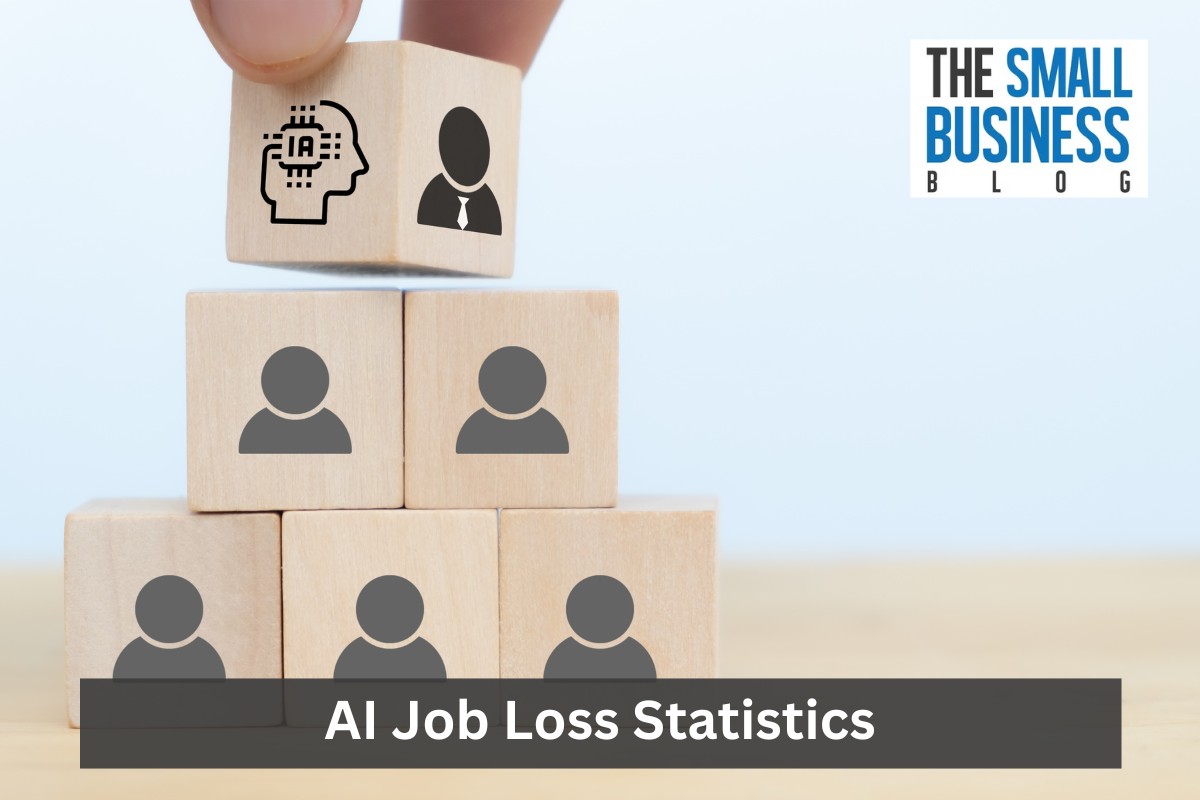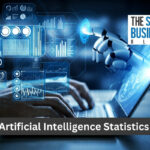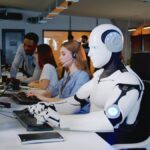Artificial intelligence (AI) stands at the forefront of innovation, promising to revolutionize industries and ease work processes.
However, as this technology continues to affect various sectors, concerns about its impact on the job market have become increasingly concerning.
In this article, join us as we delve into the area of AI job loss statistics and how it reveals a complex and challenging landscape that demands our attention and strategic planning for the future!
Post Contents
- 1 General AI Job Loss Statistics in 2024
- 1.1 1. By 2030, AI is predicted to lead to the loss of 800 million jobs worldwide
- 1.2 2. By 2030, approximately 45 million Americans will face job losses as a result of AI
- 1.3 3. AI is expected to make a substantial economic impact, amounting to $15.7 trillion by 2030
- 1.4 4. Half of all companies have integrated AI into their operations
- 1.5 5. Automation has the potential to boost the world’s economy by 1.4% of the global GDP annually
- 1.6 6. Within the next 3 years, over 120 million workers will require retraining and up-skilling to adapt to new demands
- 1.7 7. AI is the reason behind the loss of 4000 jobs on a monthly basis
- 1.8 8. More than 50% of people anticipate that computers will take over tasks currently done by workers within the next 50 years
- 1.9 9. 36% of workers believe their job will still be in existence after 50 years
- 1.10 10. 35% of young adults are skeptical that computers will replace human labor
- 1.11 11. By 2025, AI poses a threat to around 52% of jobs worldwide
- 1.12 12. Due to the influence of AI, it is unlikely that 42% of jobs lost during the pandemic will return
- 1.13 13. AI has the potential to generate as many as 97 million job opportunities
- 1.14 14. AI and machines are expected to cause a 13% decline in total human task hours
- 2 AI Job Loss Statistics by Country
- 3 AI Job Loss by Industry
- 3.1 18. About 17% of workers involved in manual labor fear the potential loss of their jobs to computers
- 3.2 19. Repetitive tasks are expected to be most impacted by AI in terms of job replacement
- 3.3 20. Writers, lawyers, scientists, graphic designers, and software developers are less prone to automation by artificial intelligence
- 3.4 21. The majority of school teachers (72%) foresee a substantial 75% long-term skill gap in students due to AI.
- 3.5 22. With a 40% increase in AI-integrated jobs over the next 5 years, students need to adapt to this emerging technology
- 3.6 23. AI is predicted to handle 20% of tasks within the healthcare sector
- 4 Conclusion
- 5 Sources
Key Statistics
- AI could replace about 800 million jobs worldwide by 2030
- By 2030, AI’s economic impact could reach $15.7 trillion
- Over 120 million workers need retraining in the next 3 years due to AI shifting industry demands
- About 45 million American jobs might be taken over by AI by the year 2030
- Half of businesses have integrated AI into their operations
- Majority foresee computers replacing human tasks in 50 years
- AI might prevent the restoration of 42% pandemic job losses
General AI Job Loss Statistics in 2024
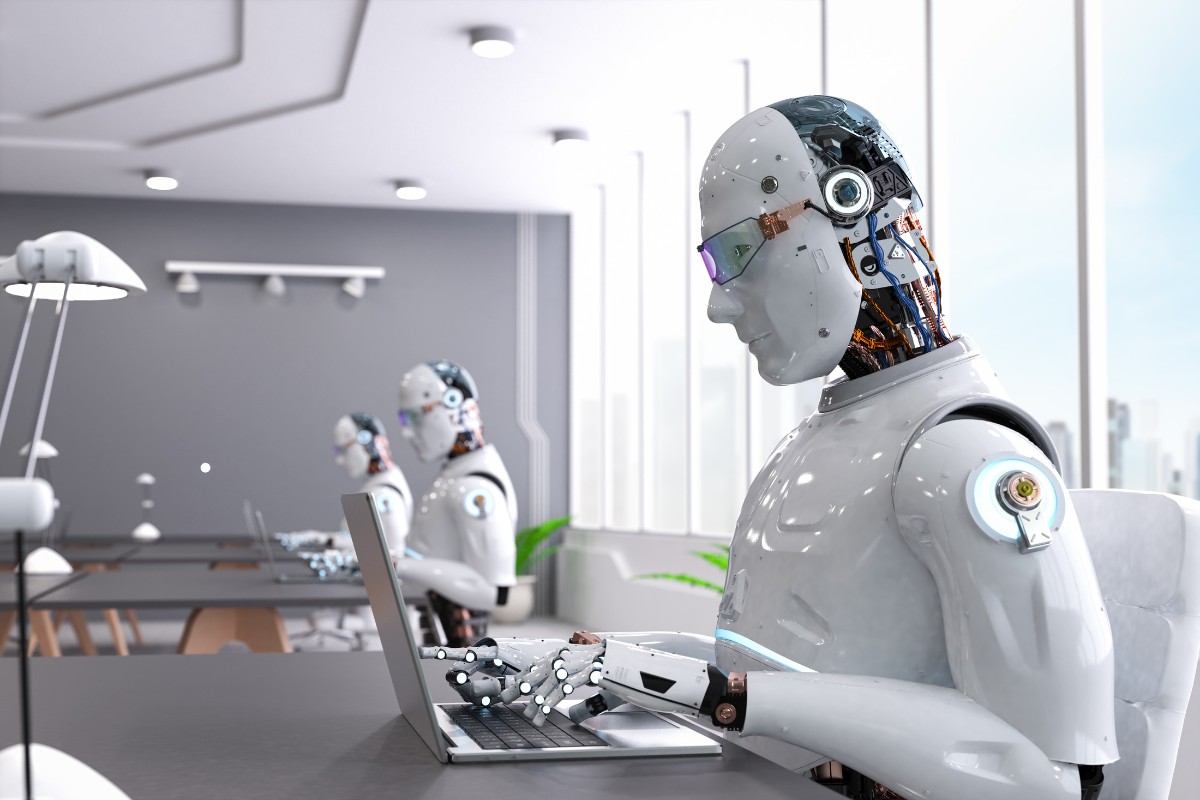
1. By 2030, AI is predicted to lead to the loss of 800 million jobs worldwide
By 2030, a staggering 800 million jobs worldwide could be at the mercy of artificial intelligence.
This revelation undoubtedly sparks the urgency for governments, businesses, and individuals to brace themselves for the transformative waves AI may bring crashing into the job market.
The impending AI-driven workforce transformation serves as both an opportunity and a cautionary warning.
While automation and smart algorithms have the potential to boost productivity and efficiency, they also bear the capacity to reshape the landscape of employment as we know it.
(Gitnux)
2. By 2030, approximately 45 million Americans will face job losses as a result of AI
The American workforce is also bracing for a seismic shift as AI automation continues its relentless march forward.
By the year 2030, an alarming estimate of 45 million Americans, equivalent to approximately one quarter of the workforce, could face the harsh reality of losing their jobs to artificial intelligence.
Industries across the board are eagerly adopting automation to streamline processes and cut costs.
However, this drive for efficiency comes at the expense of human jobs.
Roles once believed to be secure, such as manufacturing and customer service, are now vulnerable to being replaced by machines and artificial intelligence that can perform tasks with increasing proficiency.
(Zippia)
3. AI is expected to make a substantial economic impact, amounting to $15.7 trillion by 2030
In the ever-evolving landscape of technology, artificial intelligence (AI) stands as a formidable force that is predicted to yield significant economic outcomes.
Forecasts indicate that by the year 2030, AI alone is expected to generate a staggering $15.7 trillion in economic impact.
One of the pivotal aspects of this AI-driven transformation is its profound influence on the Gross Domestic Product (GDP) of nations, with China and the United States at the forefront of this revolution.
Experts predict that China’s GDP is slated to experience an awe-inspiring growth rate of 26% owing to the rapid integration of AI into various industries.
Simultaneously, North America is not far behind, expecting a substantial 14% boost in its GDP, courtesy of artificial intelligence.
(Fortunly)
4. Half of all companies have integrated AI into their operations
An impressive milestone has been reached with regards to artificial intelligence (AI) integration.
A recent survey shows that a substantial 50% of companies have embraced AI and integrated it into their operations.
This finding highlights the growing significance of AI as a transformative technology that holds the potential to mold industries and drive innovation.
AI integration is now a reality for half of all companies.
From automating tasks to improving customer experiences, businesses are recognizing the value of incorporating AI into their operations.
As AI technology continues to advance, the gap between adopters and non-adopters is expected to narrow further, making AI a necessity for sustainable growth in the digital age.
(Zippia)
5. Automation has the potential to boost the world’s economy by 1.4% of the global GDP annually
Statistics from years ago indicated that jobs lost to automation exposed the potential of this technology to boost overall productivity in the global economy.
According to experts, automation has the capability to accelerate the world economy’s productivity by a noteworthy 1.4% of the global GDP each year.
While the promise of increased productivity through automation is evident, the issue of job displacement remains a concern.
(Fortunly)
6. Within the next 3 years, over 120 million workers will require retraining and up-skilling to adapt to new demands
With the rise of Artificial Intelligence (AI) transforming industries, the job market faces significant disruption.
Over 120 million workers worldwide will need retraining and up-skilling within the next 3 years to adapt to the changes brought on by AI’s impact on jobs.
AI offers both exciting opportunities and concerns as it promises to enhance productivity, efficiency, and decision-making.
However, this rapid technological advancement also raises fears of potential job displacement.
Businesses and governments need to invest in reskilling initiatives that prepare employees to embrace emerging AI technologies while focusing on developing uniquely human qualities, including individual creativity and emotional awareness.
(Zippia)
7. AI is the reason behind the loss of 4000 jobs on a monthly basis
Recent data from Challenger reveals that artificial intelligence (AI) has played a role in nearly 4,000 monthly job losses.
As businesses increasingly embrace AI’s ability to handle complex organizational tasks and reduce workloads, concerns about its impact on employment are on the rise.
According to the firm’s report, U.S.-based employers announced over 80,000 layoffs in a month, marking a 20% increase from previous months and almost quadruple the figures for the same period of the previous year.
Among these job cuts, AI was responsible for approximately 5%, accounting for 3,900 positions lost.
This ranking places AI as the seventh-highest contributor to employment losses cited by employers.
(CBS News)
8. More than 50% of people anticipate that computers will take over tasks currently done by workers within the next 50 years
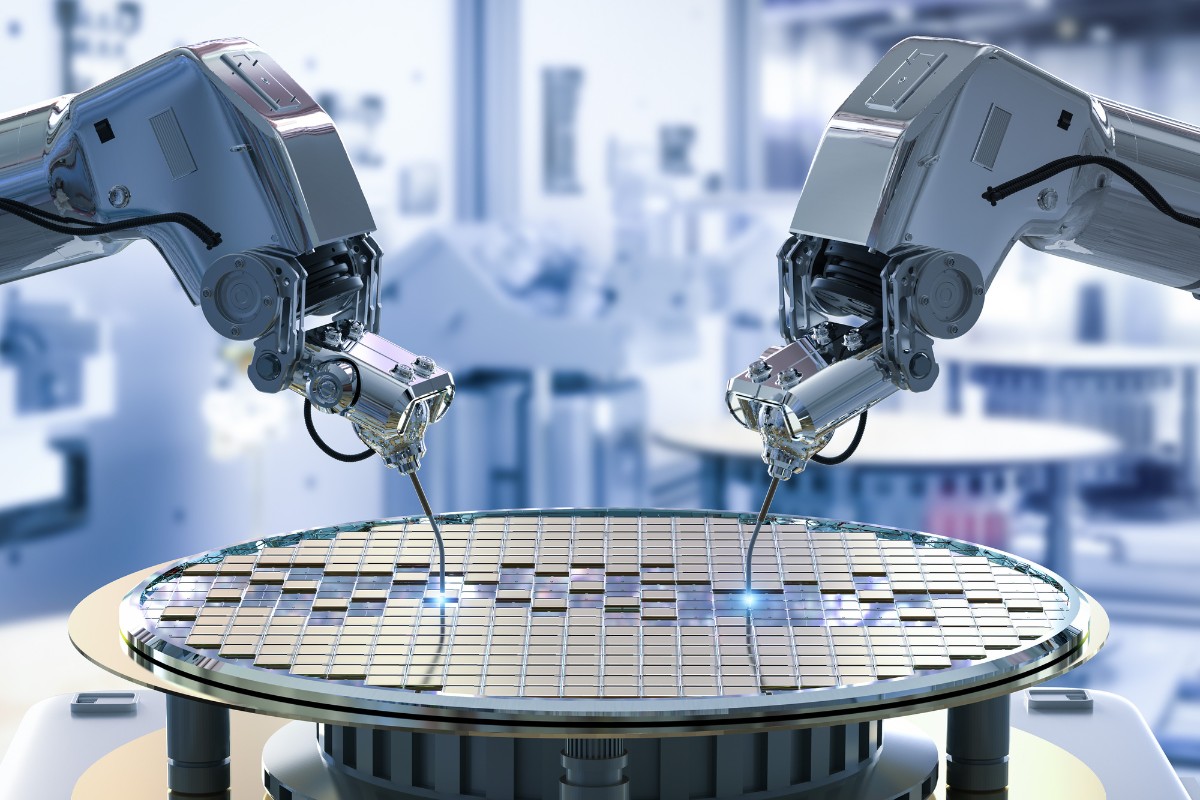
The survey results are in, and they paint a compelling picture of the future of work.
A staggering majority of adults, over 50%, firmly believe that robots and computers will assume a significant portion of the tasks currently handled by human workers within the next 50 years.
Delving deeper into the data, we find that 15% of respondents are firm in their stance, confidently asserting that automation will undoubtedly dominate the job market.
In contrast, a substantial 50% are more optimistic, seeing automation as a part of our future work environment.
(Zippia)
9. 36% of workers believe their job will still be in existence after 50 years
Interestingly, despite the increasing automation trends, there remains a sense of optimism among a considerable portion of workers regarding the longevity of their current jobs or professions.
The survey revealed that 36% of respondents firmly believed that their jobs would undoubtedly exist even after 50 years, while 44% were more inclined to think that it was probable.
(Zippia)
10. 35% of young adults are skeptical that computers will replace human labor
According to recent surveys, 35% of young adults aged 18 to 49 hold the belief that robots and computers are unlikely to take over much of the work currently done by humans.
This perspective is surprising considering that these individuals are part of the digital generation, raised in a world of rapidly evolving technology.
Their skepticism about the potential impact of automation contrasts with the concerns of older generations who are more anxious about machines replacing traditional human roles.
(Zippia)
11. By 2025, AI poses a threat to around 52% of jobs worldwide
As artificial intelligence (AI) continues to advance rapidly, projections indicate that by 2025, approximately 52% of jobs globally could be at risk of being taken over by AI-driven technologies.
The impact of AI on the labor force is profound, and without proper preparation, the job market could undergo significant disruptions.
Governments must take the lead in crafting policies that embrace technological advancements while simultaneously addressing the potential challenges of widespread job displacement.
By striking a balance between fostering innovation and safeguarding workers, governments can facilitate a smoother transition into the AI-dominated future.
(Gitnux)
12. Due to the influence of AI, it is unlikely that 42% of jobs lost during the pandemic will return
The COVID-19 pandemic has left a lasting impact on the job market, with around 42% of lost jobs likely never to return, primarily due to the growing influence of Artificial Intelligence (AI).
While other factors have played a role in these job disappearances, the significant impact of AI cannot be ignored.
One of the key drivers behind this trend is the pandemic’s acceleration of the transition from human employees to technology.
Employers turned to AI solutions, which are immune to sickness and often more cost-efficient, resulting in the displacement of human workers.
(Zippia)
13. AI has the potential to generate as many as 97 million job opportunities
The emergence of Artificial Intelligence (AI) has sparked debates over its impact on the job market.
Experts predict that AI could create approximately 97 million jobs, a significant number.
However, this falls short when compared to the estimated 375 million jobs that could be eliminated over the next decade due to AI integration.
Despite the potential job losses, there is hope that new opportunities will arise from other sources.
Businesses are likely to focus on creating roles that rely on human creativity rather than mundane tasks, thanks to AI’s ability to take over repetitive work.
This shift in job roles could potentially help mitigate the negative impact of job losses caused by AI.
(Zippia)
14. AI and machines are expected to cause a 13% decline in total human task hours
In the near future, the area of human work is set to undergo a substantial transformation, largely driven by automation and advanced algorithms.
According to data available, there will be a noticeable decline of 13% in the total task hours completed by workers.
Currently, statistics reveal that 71% of all task-hours are carried out by humans, with the remaining 29% handled by machines.
However, the trends suggest a significant shift in these numbers over the next few years.
The projected average indicates that 58% of task-hours will still be completed by humans, while machines will handle an increased share of 42%.
(Fortunly)
AI Job Loss Statistics by Country
15. People from different countries share the belief that AI will replace various human tasks
Across different countries, the consensus is clear – AI will revolutionize the job market.
While concerns about job displacement are valid, history shows that new opportunities often emerge alongside technological advancements.
Respondents from different countries shared their beliefs with regards to AI, the data collected is as follows:
- 91% of respondents from Greece believe that AI will take over people’s work
- 89% of respondents from Japan believe that AI will take over people’s work
- 84% of respondents from Canada believe that AI will take over people’s work
- 82% of respondents from Argentina believe that AI will take over people’s work
- 79% of respondents from Poland believe that AI will take over people’s work
- 79% of respondents from Brazil believe that AI will take over people’s work
- 73% of respondents from South Africa believe that AI will take over people’s work
- 73% of respondents from Italy believe that AI will take over people’s work
- 66% of respondents from Hungary believe that AI will take over people’s work
(Zippia)
16. In the next 20 years, approximately 49% of jobs in Japan could be substituted by AI or robotic machines
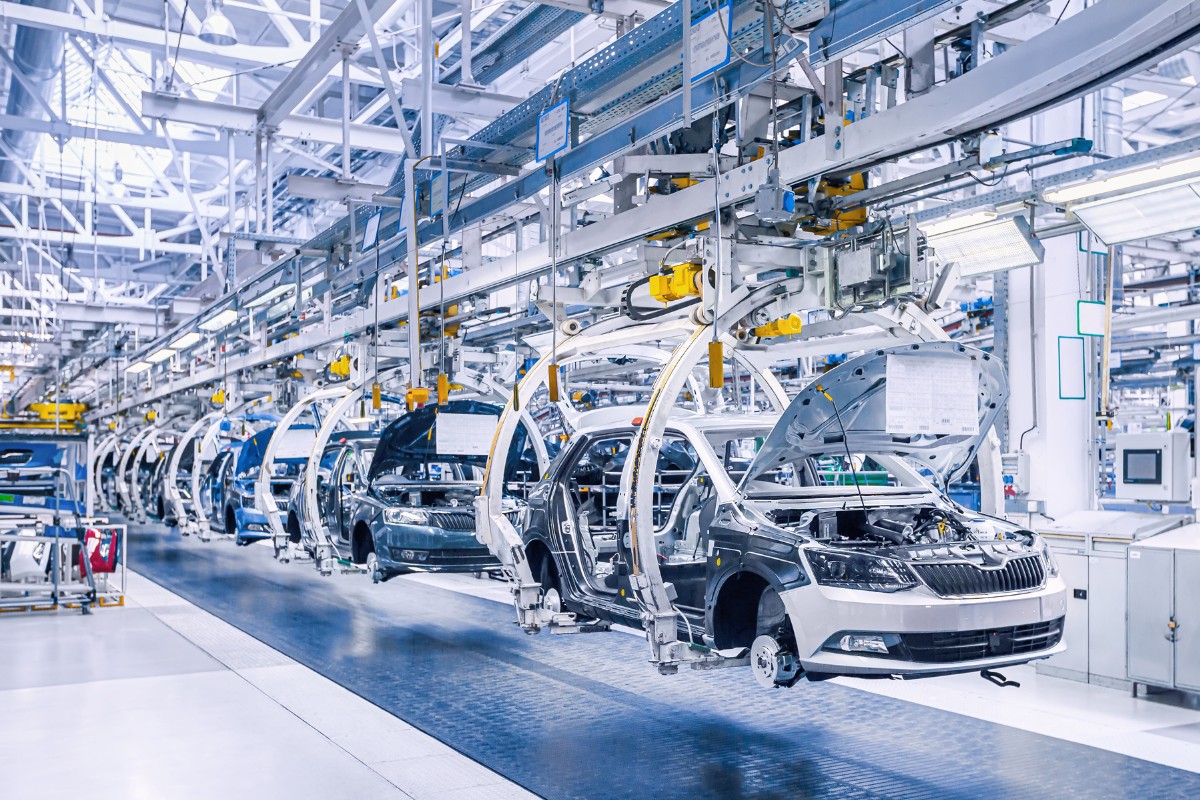
With the advancement of AI, Japan’s workforce is at the brink of significant transformation.
An estimated 49% of jobs could be replaced by AI or robotic machines within the next 10 to 20 years, sparking both interest and worry.
Industries such as manufacturing, transportation, and customer service are witnessing the most intense disruptions.
AI-driven solutions and robotic machines promise unparalleled efficiency and precision, but raise concerns about job security and the need for reskilling and upskilling.
(Gitnux)
17. AI-driven automation poses a risk to about 30% of jobs in Britain
Recent developments in artificial intelligence (AI) have sparked concerns about its potential consequences on the job market in Britain.
According to recent findings, approximately 30% of jobs in the country are at risk of being replaced by AI-driven automation.
The threat is not evenly distributed between genders, with 35% of male-dominated roles and 26% of female-dominated positions facing a high risk of automation.
(Gitnux)
AI Job Loss by Industry
18. About 17% of workers involved in manual labor fear the potential loss of their jobs to computers
According to recent surveys, a significant 17% of workers whose job primarily entails manual labor express profound concerns about losing their current positions to machines or computers.
This fear is understandable, given that automation has already made substantial inroads into traditionally labor-intensive sectors, such as manufacturing and logistics.
However, the figures shown are surprising when compared to their counterparts in non-manual labor roles.
Only a meager 5% of employees whose job responsibilities do not involve manual labor share the same level of fear about automation replacing them.
This marked difference in attitudes reflects the distinct vulnerability felt by manual laborers who often depend on their physical skills and expertise.
(Zippia)
19. Repetitive tasks are expected to be most impacted by AI in terms of job replacement
Professions that predominantly rely on repetitive tasks are among the ones most susceptible to automation.
Take, for instance, bookkeeping and proofreading roles, where AI-powered algorithms can efficiently handle data entry and language analysis, respectively.
By distributing these monotonous tasks to machines and AI, businesses can quicken their work processes and optimize their workforce.
Even industries that demand human intuition and critical decision-making are not entirely exempt from the influence of AI.
Security guards, who once solely relied on human observation, can now be assisted by smart surveillance systems using facial recognitions.
Furthermore, the medical field has witnessed tremendous advancements in AI-assisted diagnosis, medical imaging, and treatment planning, which may gradually change the traditional roles of doctors.
(Zippia)
20. Writers, lawyers, scientists, graphic designers, and software developers are less prone to automation by artificial intelligence
Professions like writers, lawyers, scientists, graphic designers, and software developers have the lowest chance of being automated by artificial intelligence.
These jobs heavily rely on soft skills such as creativity, common sense, judgment, and communication, which are challenging for AI to replicate convincingly.
While AI has its place in various industries, these professions continue to thrive due to their unique human touch and expertise.
(Zippia)
21. The majority of school teachers (72%) foresee a substantial 75% long-term skill gap in students due to AI.
In the ever-evolving landscape of education, one concern looms large – the potential for a significant skill gap among future generations.
According to recent findings, a staggering 72% of secondary school teachers believe that addressing this challenge lies in bolstering education and resources around artificial intelligence (AI) and computer science.
Their primary motivation is preventing a looming 75% feared long-term skill gap.
The accelerating pace of technological advancements has brought AI and computer science to the forefront of industries across the globe.
As these technologies affect every aspect of modern life, educators recognize the urgent need to equip today’s youth with the necessary knowledge and skills to thrive in the future job market.
(Gitnux)
22. With a 40% increase in AI-integrated jobs over the next 5 years, students need to adapt to this emerging technology
With predictions indicating a substantial 40% escalation in job roles requiring AI skills over the upcoming half-decade, there exists a pressing need to adequately prepare students for the field of Artificial Intelligence (AI) and computer science.
The possibility of a continuous skill gap draws near, making it mandatory to introduce students to the immense potential and implications of AI technology.
To ensure students are well-prepared for the AI-powered future, educational institutions must integrate AI and computer science seamlessly into their academic frameworks.
By immersing students in these disciplines early on, educators can nurture essential skills like critical thinking, setting the stage for a generation of problem solvers and tech-savvy professionals.
(Gitnux)
23. AI is predicted to handle 20% of tasks within the healthcare sector
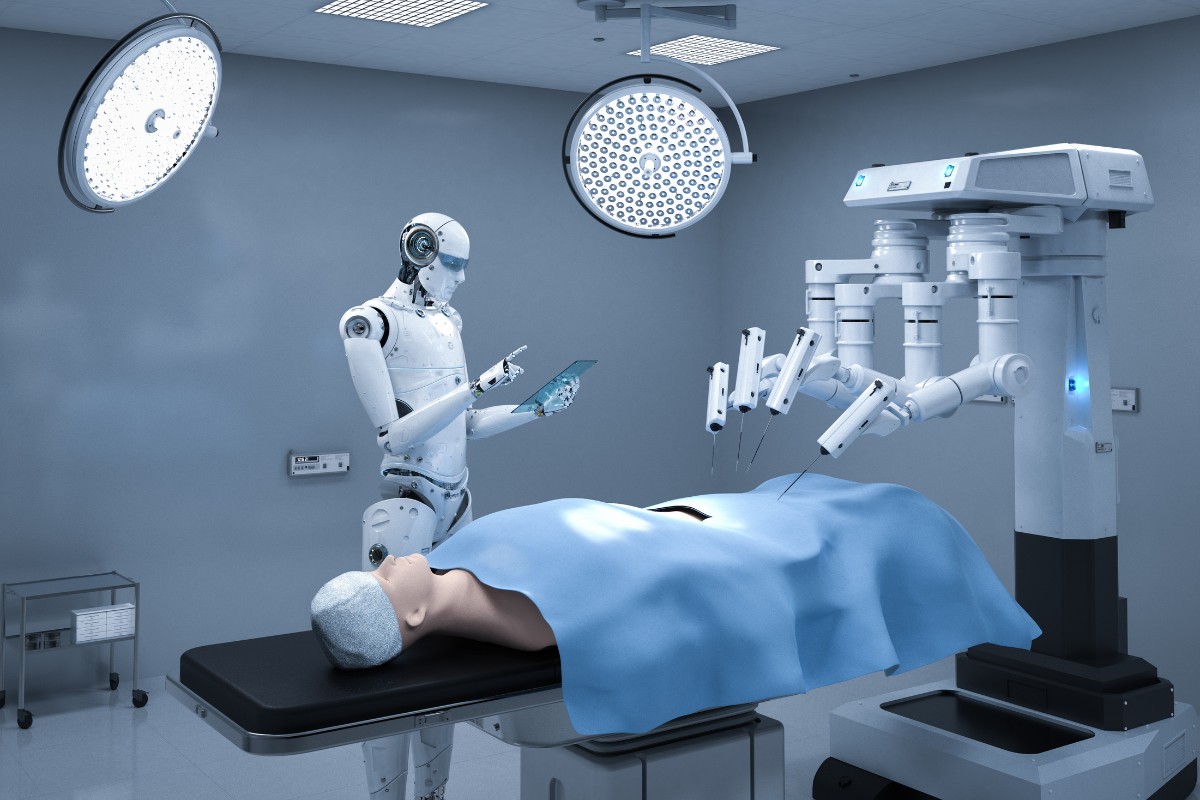
In the rapidly evolving landscape of healthcare, the year 2023 is set to witness a noteworthy change.
AI is projected to undertake a substantial 20% of tasks within the sector.
This impending shift underscores AI’s significant role in reshaping healthcare dynamics.
However, this statistic is not merely a beacon of progress; it also casts a shadow of apprehension.
It rings as a wake-up call, highlighting the evolving employment landscape and potential job displacement due to AI integration in the healthcare sector.
(Gitnux)
Conclusion
In conclusion, the rise of artificial intelligence presents both opportunities and challenges for the job market.
As technology continues to advance, show a reality that demands attention and preparation.
It reveals the potential scale of this impact, with millions of jobs at risk of being displaced by AI.
Industries such as manufacturing, transportation, and customer service are particularly vulnerable.
Supportive policies should be implemented to protect workers during job transitions, and collaboration between AI and human workers should be encouraged to maximize productivity.
By taking these steps collectively, we can navigate the challenges of AI job losses and build a resilient and adaptive workforce for the future!







